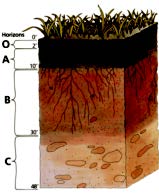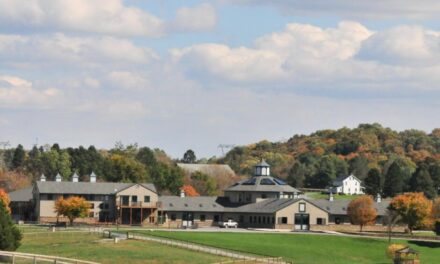Source: Maryland Department of Agriculture Office of Resource Conservation
There is an old saying, “Take care of your soil and your grass will take care of itself.” Soils vary widely, even across your pastures. So to begin, you must know your soil type, pH (acidity or alkalinity), and its capacity to hold water and nutrients.
TEST YOUR SOIL
Establishing and maintaining a dense, vigorous pasture/grass that will withstand the constant trampling of horses is not easy. An inexpensive soil test can help you determine the type and amount of fertilizer needed for good pasture growth. This will also help prevent nutrient runoff from over-fertilized pastures, cut down on fertilizer costs, and can improve your horse’s nutrition. Test soil at least every three years to determine your pasture’s fertilizer and lime needs.
With the results of a soil test in hand, a comprehensive fertilizer program can be developed to encourage growth of legumes such as alfalfa, as well as a range of hearty pasture grasses. Visit extension.umd.edu for a list of soil testing labs and sampling instructions.
SANDY VS. CLAY: HOW WELL DOES YOUR SOIL HOLD WATER?
Pasture grasses and legumes must be matched to the soil’s pH and fertility as well as its ability to hold moisture. These factors are critical to a long-lived and productive stand. The amount of water that soil can hold will determine:
• When you can put your horses in the field in the spring
• Grass yields in the summer
• The filtering of animal and human wastes
• The amount of fertilizer and/or composted manure to apply
• The placement and durability of structures
• The presence of a wetland
• The rooting depths for plants and trees
 A SOIL PROFILE
A SOIL PROFILE
Soil is made up of distinct layers called horizons. This illustration shows the soil layers and their relative depths. Topsoil (Horizon A) is usually the darkest layer of the soil because it has the highest proportion of organic material. It is also the most susceptible to erosion. It takes nature hundreds of years to make just one inch of topsoil.
When topsoil washes away, it’s bad news for your pasture.
HOW TO IMPROVE SOIL HEALTH
• Reduced Till—Use no-till or reduced tillage practices to reduce erosion, preserve the soil structure, encourage aggregation, and keep the soil healthy.
• Forage Planting—Over time, plant several forage varieties in your pastures for diversity to build healthy soils, manage erosion, and feed soil microorganisms. Try to incorporate both warm season and cool-season grasses in the same pasture and include legumes to reduce nitrogen requirements.
• Prescribed Grazing—Manage grazing wisely. Remember, proper grazing builds healthy soils.
• Manure Recycling—Use manure to fertilize your pastures. Manure makes a great natural fertilizer and soil conditioner. It helps build healthy soils that are rich in organic matter and full of life—both above and below the ground.












